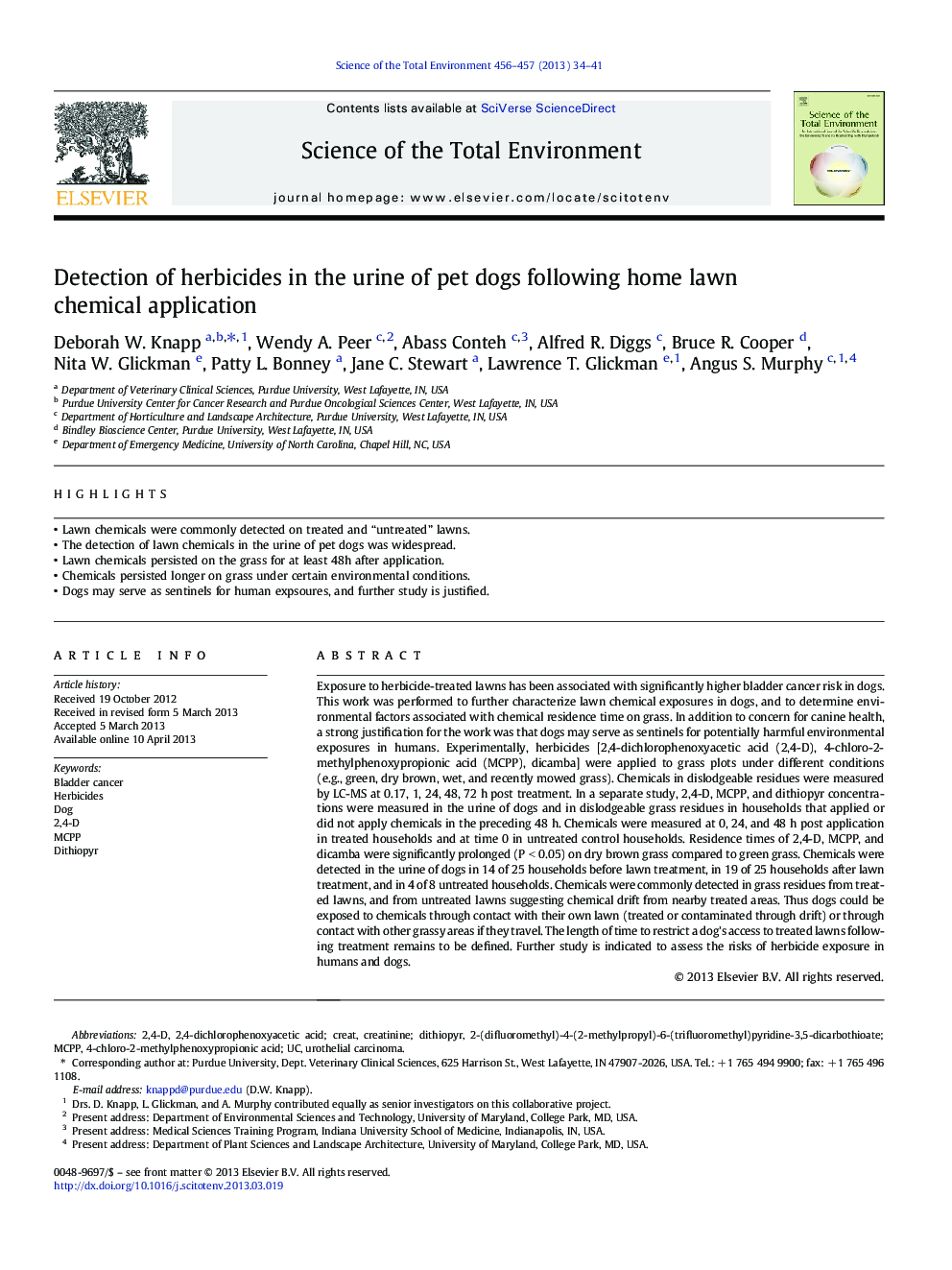| کد مقاله | کد نشریه | سال انتشار | مقاله انگلیسی | نسخه تمام متن |
|---|---|---|---|---|
| 4428790 | 1619801 | 2013 | 8 صفحه PDF | دانلود رایگان |
عنوان انگلیسی مقاله ISI
Detection of herbicides in the urine of pet dogs following home lawn chemical application
دانلود مقاله + سفارش ترجمه
دانلود مقاله ISI انگلیسی
رایگان برای ایرانیان
کلمات کلیدی
موضوعات مرتبط
علوم زیستی و بیوفناوری
علوم محیط زیست
شیمی زیست محیطی
پیش نمایش صفحه اول مقاله

چکیده انگلیسی
Exposure to herbicide-treated lawns has been associated with significantly higher bladder cancer risk in dogs. This work was performed to further characterize lawn chemical exposures in dogs, and to determine environmental factors associated with chemical residence time on grass. In addition to concern for canine health, a strong justification for the work was that dogs may serve as sentinels for potentially harmful environmental exposures in humans. Experimentally, herbicides [2,4-dichlorophenoxyacetic acid (2,4-D), 4-chloro-2-methylphenoxypropionic acid (MCPP), dicamba] were applied to grass plots under different conditions (e.g., green, dry brown, wet, and recently mowed grass). Chemicals in dislodgeable residues were measured by LC-MS at 0.17, 1, 24, 48, 72Â h post treatment. In a separate study, 2,4-D, MCPP, and dithiopyr concentrations were measured in the urine of dogs and in dislodgeable grass residues in households that applied or did not apply chemicals in the preceding 48Â h. Chemicals were measured at 0, 24, and 48Â h post application in treated households and at time 0 in untreated control households. Residence times of 2,4-D, MCPP, and dicamba were significantly prolonged (PÂ <Â 0.05) on dry brown grass compared to green grass. Chemicals were detected in the urine of dogs in 14 of 25 households before lawn treatment, in 19 of 25 households after lawn treatment, and in 4 of 8 untreated households. Chemicals were commonly detected in grass residues from treated lawns, and from untreated lawns suggesting chemical drift from nearby treated areas. Thus dogs could be exposed to chemicals through contact with their own lawn (treated or contaminated through drift) or through contact with other grassy areas if they travel. The length of time to restrict a dog's access to treated lawns following treatment remains to be defined. Further study is indicated to assess the risks of herbicide exposure in humans and dogs.
ناشر
Database: Elsevier - ScienceDirect (ساینس دایرکت)
Journal: Science of The Total Environment - Volumes 456â457, 1 July 2013, Pages 34-41
Journal: Science of The Total Environment - Volumes 456â457, 1 July 2013, Pages 34-41
نویسندگان
Deborah W. Knapp, Wendy A. Peer, Abass Conteh, Alfred R. Diggs, Bruce R. Cooper, Nita W. Glickman, Patty L. Bonney, Jane C. Stewart, Lawrence T. Glickman, Angus S. Murphy,